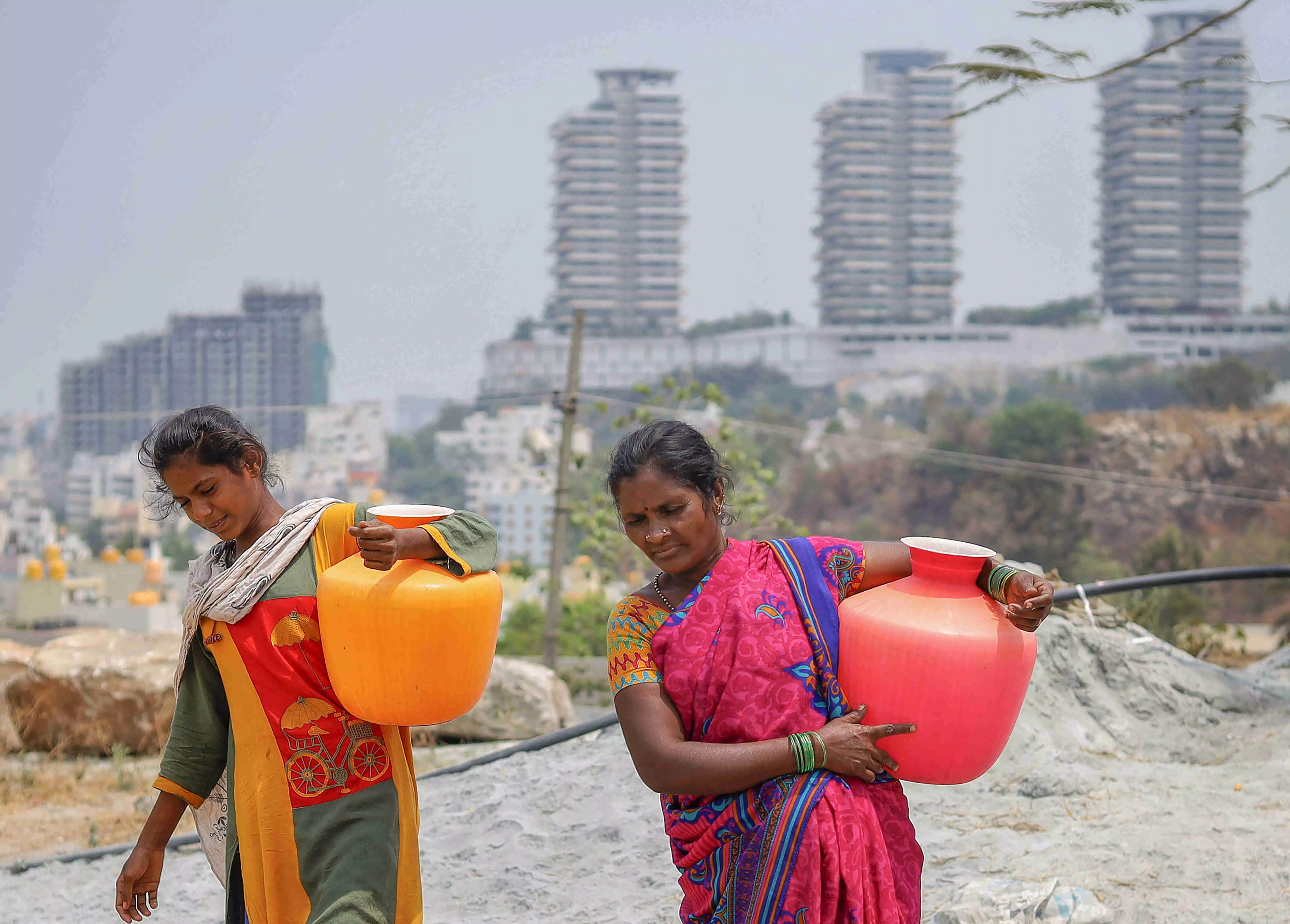No water, no joy
Bangalore reels under acute water scarcity amid high temperatures as thoughtless urbanisation of the past comes to haunt the once ‘Garden City’

“They sold us on the dream,” remarked a business acquaintance to me on a call…and that dream is going bust, I muttered to myself. Bangalore, the ‘Garden City’, the locale of lakes, the IT hub, the startup capital, India’s Silicon Valley with the best all-round pleasant weather — has a new nomenclature — India’s Cape Town. In the last few weeks, the water scarcity has created an emergency situation wherein workers are demanding work-from-home, schools are being shut, businesses scramble to stay open, residents queue up for drinking water, and many white collar migrant workers beat temporary retreats to their hometowns.
The El Nino effect has prevented rain, causing much of the newer parts of the city to fall apart. The days are hot, touching almost 40 degrees, a hitherto unusual occurrence in the city where cooler climes meant no air-conditioners even in peak summer, and no requirement of fans for most of the year. The Cauvery basin is experiencing a drought, borewells are drying up due to receding groundwater levels and over-extraction. Bangalore is dependent on two sources for water — about 1,450 million litres per day of water comes from the Cauvery and an additional 700 MLD from borewells that are dug by the Bruhat Bengaluru Mahanagara Palike (BBMP) and managed by the Bangalore Water Supply and Sewerage Board (BWSSB). As per news reports, the Cauvery V Stage project, that would bring 775 MLD of piped potable water to the currently water-stressed 110 villages may be stalled due to rain shortage in the Cauvery basin.
A failed monsoon last September and an early summer has now exacerbated the water crisis. Animals, plants, and humans alike are left praying to the rain gods. But one year of unexpected lack of rain should not destabilise one of India’s most economically affluent cities, right? Wrong. This is the story of decades of greed, corruption, and poor governance. And to blame climate change alone would be a fallacy. The predicament that Bangalore, like many other Indian cities, finds itself is single-handedly man-made — extreme urbanisation without adequate foresight.
For a relatively new Bangalore resident of barely 2.5 years like me, the comfort of having finally found another karmabhoomi after Delhi, feels a bit lost (at least for the moment). I first came to Bangalore almost 16 years ago, to report on elections. Few quick trips and a year later, I came to the city again, this time hoping to stay longer. I was to join a news channel and the opportunity seemed worth the relocation from the national capital. The summer showers, the chilly evenings, and the sleepy city had a wonderful charm. And even though that stint lasted only 5 days due to a family emergency, I hoped to be back some day. Fast forward to post-pandemic, my shift to Bangalore in 2022 was the fruition of a long-pending plan. But even a newbie in the city like me noticed the rapid changes, some unravelling just in the last few years. An inexorable drive and desire to concretise. Today, 93 per cent of Bangalore is a concrete jungle, as per a study by the Indian Institute of Science (IISc). A mind-boggling 1,055 per cent increase in built-up areas, with more than 79 per cent drop in water spread areas, and 88 per cent loss of vegetation, as per IISc scientists. The water spread areas have declined from 2,324 hectares in 1973 to an embarrassing 696 hectares in 2023. The once green and abundant city is barren and desert-like; and with each passing day looks less like itself.
The most shocking fact is that the sky-touching high-rises and luxury villas have been sanctioned with no plans of sustainable water supply. The newer parts of Bangalore, including the residential complex that I reside in, depend on water tankers and borewells. There is no piped water save for the older, better-planned parts of the city. And this city, which has over the years been blessed with strong rains, doesn’t believe in rainwater harvesting, which could resolve much of the water scarcity. A staggering 90 per cent of rainwater is allowed to go to waste in Namma Bengaluru. News reports reveal that BWSSB has collected Rs 10 crore as fine in the last 6 months alone from residential and commercial entities for not installing rainwater harvesting systems. A combination of all these legacy factors coupled with unthinking urbanisation, has ensured that once climate change came calling (namely, enemigo El Nino), Bangalore was found wanting, mainly of water.
Just think about this — every flat that is being constructed is upwards of Rs 1.35 crores and can go well over Rs 3 crores. The villas and row houses start at Rs 1.75 crores (approximately) and can touch Rs 7-7.5 crores easy. Each such complex has hundreds of flats, scores of villas; meaning that the value of each property is in multiple crores, and yet there is no sustainable plan for water supply! It’s laughable that owners of multi-crore properties are trooping to the adjoining mall to use the loo! Or like in the previous years of heavy rain, billionaires had to leave their homes on rafts — their luxury cars et al left floating in flood water! If rainwater harvesting, proper water supply planning for real estate projects, judicious — almost spartan — use of water by factories and residences, regeneration of green cover, proactive treatment of wastewater, and so on are not done on war footing, then Bangalore will turn into the destruction of a lovely dream for many who have sunk in it their hard-earned money and futures.
The writer is an author and media entrepreneur. Views expressed are personal



